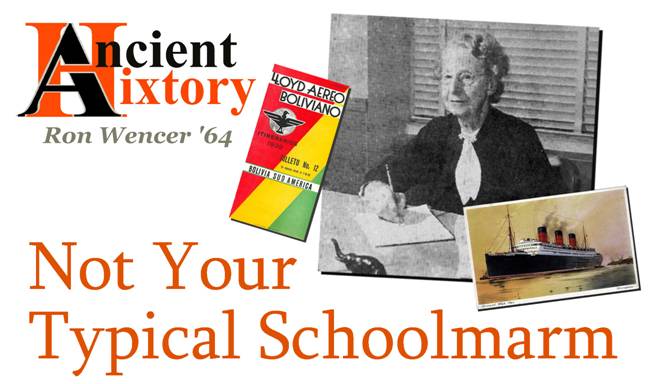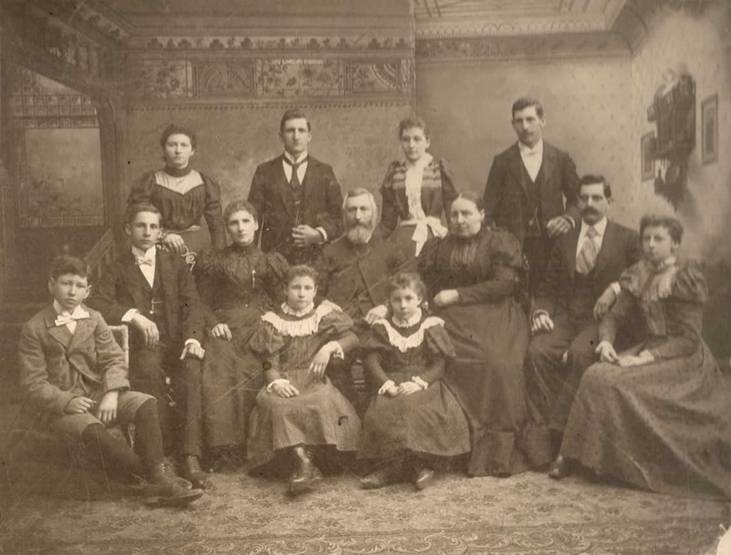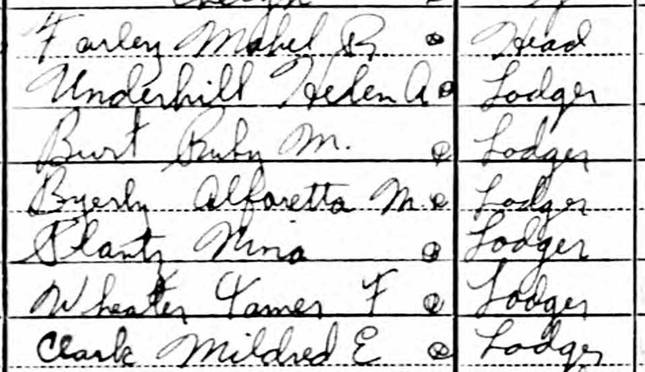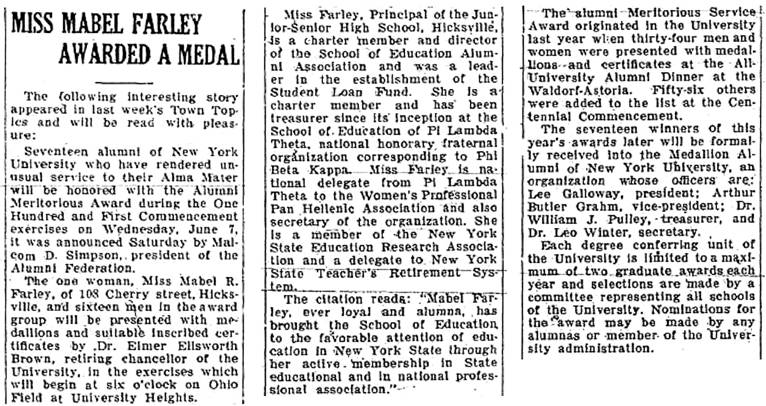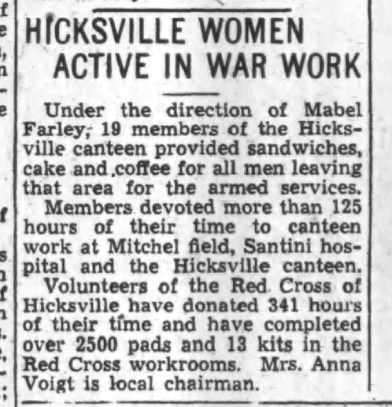Last month, this column
outlined the early years of her career.
Let us now focus more sharply on, and make crystal clear, the
sweep of change that they encompassed. When 1911 began, the Twenty years later, a more
populous Had the village - had
Mabel Farley - changed overnight?
Of course not; the change
took time, planning, and work. Many
factors were involved, and many people played important roles.
Most of those people, however, were male, they were accomplished
in their careers, and they already enjoyed some well-founded prominence
in What was this dynamic
young Miss Farley like? To
understand her, one must consider her in a variety of contexts.
A
century ago, it was common for a teacher to live as a boarder in a local
home, either singly, or as one of several boarders.
Multiple teachers might board in the same dwelling.
As she became more established in the community, Mabel came to
like the latter situation. She
must have appreciated the synergy of living among like minds, for by the
late 1920s she was part of a fixed group of teachers who shared
accommodations year after year. Based
on an interview with her, a newspaper reported that this group called
itself the Teachers Club; it
eventually had formalized itself as a co-op, and it conducted itself
according to a formal set of written rules.
The
group's interests included lectures, travel (both within the
As
noted last month, during her early years in
Note
that the timing of the award corresponds to lowest point of the Great
Depression of the 1930s, a moment in history at which the Student Loan Fund which Farley helped create would have assumed
special importance for many people. As
one reads the things mentioned above, one sees new manifestations of the
qualities which had made Farley successful in Hicksville's small,
once-tumultuous school district - an exceptional willingness to
volunteer her time; a generosity of spirit, which led her to maintain
friendships and professional relations not just for her own benefit, but
for the benefit of others; a keen mind that always found new ways to use
her abilities, even in milieus in which opportunities for women might
still be limited. Principal
Farley was not one to undertake any task lightly.
The only way she knew to do things was to excel at them, and the
only way she knew how to lead others was to inspire them to do their
best. In
1942, the Federal government needed more capital with which to fight
World War II, and it created the Minute
Man program, in which organizations competed by having their staff /
attendees and their families commit to ongoing purchases of War Bonds.
The competition was not about having the most sales or the most
money; it was about the level of participation each organization
achieved, with a figure of 90% considered exceptional.
As one would expect, Miss Farley's Hicksville High did the town
proud; it was the first high school in
Around
this time, a newspaper published a profile of Mabel Farley, and in it,
the subject did her best to deflect praise from herself, and to share
the spotlight with the achievements of her past students. She
of course took time to mention those who had won academic honors, and
those who had careers in, or were studying, medicine, engineering, and
law (incidentally, at least one of the latter was by then a judge).
At least eleven Hicksville graduates who had gone on to become
teachers were at that time working in
In
the summer of 2008, a number of letters were written to Hixnews.com in
support of granting Mabel Farley entry to the Hixnews Hall of Fame. I looked
back at them before writing this article.
As my elder sister Marilyn had been a student under Miss Farley,
I was not surprised to see people write about their Principal's famous
blend of stern demeanor and understanding heart.
Apparently, she did not confuse forgiveness with giving people
free rides. And yet, when it
mattered, she could be unexpectedly flexible. Students
who ran into problems, even problems of their own making, knew that they
could come to Mabel Farley for advice.
In nominating Miss Farley, one graduate talked about Miss
Farley's having first got to know him because he had had some
difficulties that required her intervention.
Despite first meeting under awkward circumstances, near the end
of his senior year she unexpectedly booked a job interview for him, at a
company she felt would be a good match.
He got the job, and he went on to work for that employer until he
retired, more than forty years later. Another
student wrote that he had tried to tailor his classes at
It
is obvious that serving others was extremely important to Mabel Farley;
she constantly found ways to help people.
Although earning her degrees at NYU had served her own purposes
well, she also used her experience there as an opportunity to help other
alumni, and to assist needy students.
Perhaps it was inevitable that she would extend her obligation to
oversee the education of
Surely,
that is just one more part of high school, right? Well,
it was not always. When
Hicksville High was new, and a graduate wished to
enroll
in a college, the Admissions people at the college might be skeptical.
They had never seen any To
help address this skepticism, Farley began lobbying people associated
with the National Honor Society whenever she attended an educators'
conference anywhere in the Northeast (which happened a lot).
She wanted her graduates to be given fair consideration for a
slot in college, not dismissed out of hand.
It took years, but she finally succeeded; Hicksville was among
the first All
this work was a gift to her students.
At that time, an NHS affiliation might make the critical
difference in awarding a college seat to one applicant or another.
In
her seamless view of the world, being Principal was only part of her
greater work, especially where the village was concerned.
She became part of the fabric of Fred
Fluckiger (Class of 1938, and now deceased) wrote a moving letter about
having to retrieve the body of a fallen comrade during combat, which
appeared in the September 2009 edition of Hixnews.
This is a slightly edited excerpt from that letter:
It
is doubtful that she had expected the lessons she instilled in her
students to be with them in combat - but she could do something, even
if it was only a small thing, to honor her students who were going to
war. Hence, at Mitchel
Field, and at the Hicksville Canteen (the location of which is not known
to me), ex-students in uniform were served sandwiches and cake by their
devoted former Principal. I
find that quite a touching image.
|
